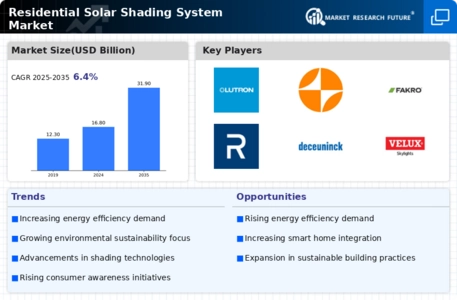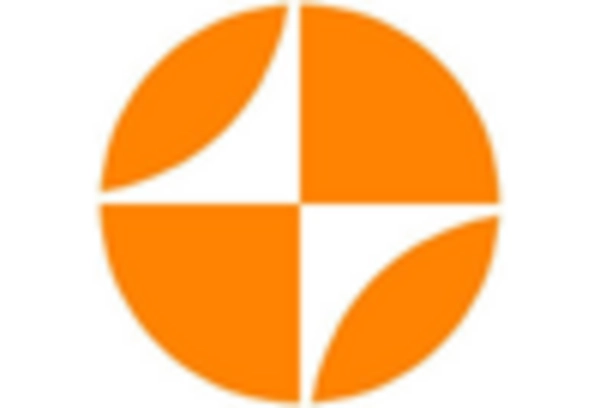Rising Energy Costs
The increasing cost of energy has become a pivotal driver for the Residential Solar Shading System Market. As homeowners seek to mitigate their energy expenses, the demand for energy-efficient solutions has surged. Solar shading systems can significantly reduce cooling costs by blocking excessive sunlight, thereby lowering reliance on air conditioning. According to recent data, energy prices have risen by approximately 15% over the past five years, prompting consumers to explore alternative energy-saving options. This trend indicates a growing awareness of energy conservation, which is likely to propel the adoption of residential solar shading systems as a viable solution for cost-effective energy management.
Technological Advancements
Technological advancements are transforming the Residential Solar Shading System Market, leading to the development of innovative and efficient shading solutions. The integration of smart technologies, such as automated shading systems that respond to sunlight intensity, enhances user convenience and energy efficiency. These advancements not only improve the functionality of solar shading systems but also increase their appeal to tech-savvy consumers. Furthermore, the introduction of new materials and designs has expanded the range of options available to homeowners, making it easier to incorporate solar shading systems into various architectural styles. This evolution in technology is likely to drive market growth as consumers seek modern solutions for their residential needs.
Growing Environmental Awareness
The heightened awareness of environmental issues has significantly influenced the Residential Solar Shading System Market. As climate change concerns escalate, consumers are increasingly inclined to adopt sustainable practices in their homes. Solar shading systems contribute to reducing energy consumption and minimizing greenhouse gas emissions, aligning with the values of environmentally conscious homeowners. Market Research Future indicates that a substantial percentage of consumers prioritize eco-friendly products when making purchasing decisions. This shift in consumer behavior suggests a promising future for the residential solar shading systems market, as more individuals seek to invest in solutions that reflect their commitment to sustainability.
Increased Home Renovation Activities
The rise in home renovation activities has emerged as a significant driver for the Residential Solar Shading System Market. As homeowners invest in upgrading their properties, there is a growing interest in incorporating energy-efficient solutions, including solar shading systems. Renovation projects often focus on enhancing energy efficiency and aesthetic appeal, making solar shading an attractive option. Data suggests that home renovation spending has increased steadily, with many homeowners prioritizing energy-saving upgrades. This trend indicates a robust market potential for residential solar shading systems, as they align with the goals of homeowners looking to improve their living spaces while reducing energy costs.
Government Incentives and Regulations
Government incentives and regulations play a crucial role in shaping the Residential Solar Shading System Market. Various governments have introduced tax credits, rebates, and grants to encourage the adoption of energy-efficient technologies. For instance, certain regions offer financial incentives for homeowners who install solar shading systems, which can offset initial installation costs. Additionally, regulations aimed at reducing carbon footprints and promoting sustainable building practices further stimulate market growth. The implementation of energy efficiency standards has led to an increase in demand for residential solar shading systems, as homeowners strive to comply with these regulations while enhancing their property value.


















Leave a Comment